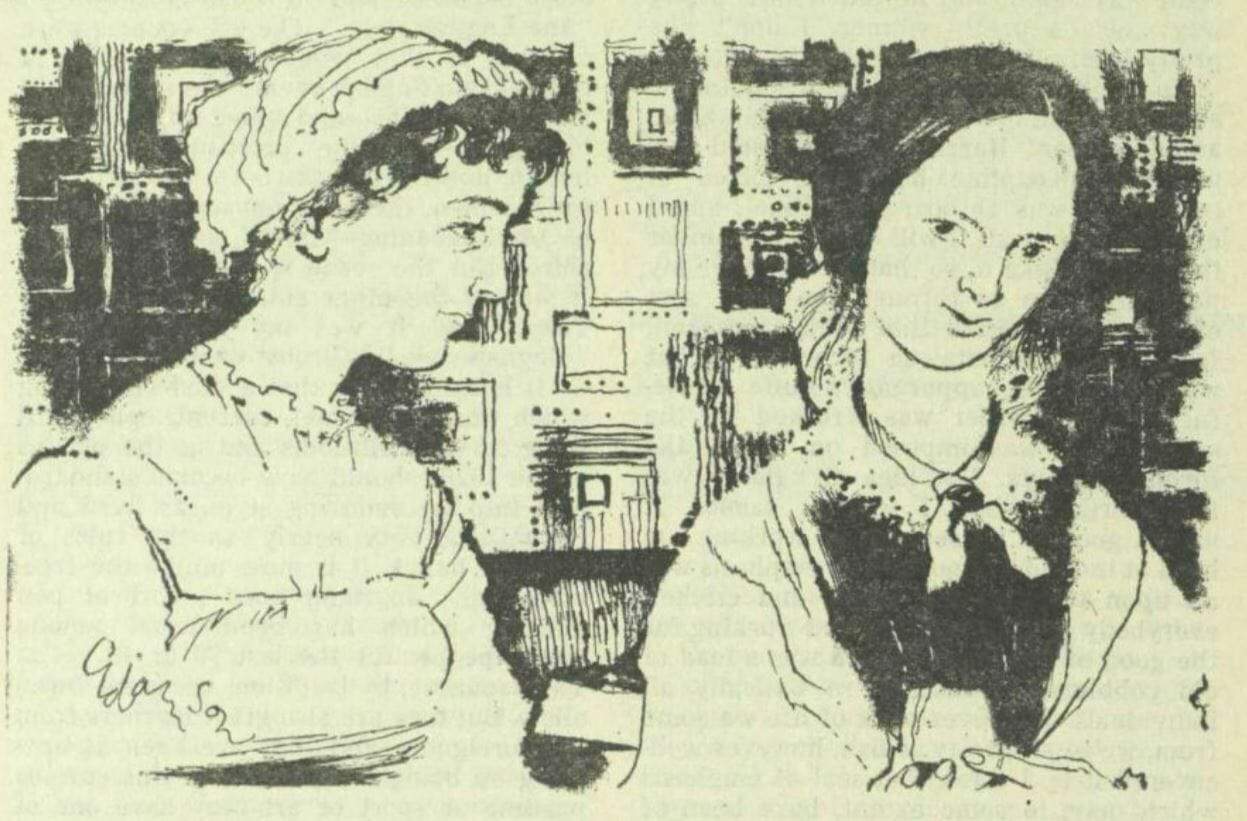By Anna Sikora, Gale Ambassador at NUI Galway
In the recent movie To Walk Invisible (2016), a biopic depicting the lives of the famous Brontë sisters, Charlotte tells her sisters to publish their work under male pseudonyms. This, the oldest Brontë supposedly reasoned, was to prevent the publishers from judging the authors, and to invite them to judge the story instead. A certain degree of moral indignation prompted some of my students to take Charlotte’s statement as a cue to sweepingly proclaim that none of the Brontë sisters would have been published had they submitted as Anne, Emily and Charlotte. If this were true, said I (a woman), there would have been no literature by women in print until Ms Wolf entered the literary scene. Generalisations and hasty conclusions kill critical thinking, so let’s take a step back and read what was actually written about the early women writers publishing under their real names and literary aliases at the time their works hit the bookshop and library shelves.
Jane Austen’s four big novels Sense and Sensibility (1811), Pride and Prejudice (1813), Mansfield Park (1814) and Emma (1815) were republished after her death and gradually began to receive acclaim. In a short review of Sense and Sensibility published in the Morning Chronicle in 1933, the author emphasises Austen’s “natural fluency and unsophisticated earnestness,” and the “irresistible vraisemblance” of her work. How dare he levy such criticism?!


How about we move on to Emma… Sir Walter Scott in the short review of the novel published in the Daily News in 1846 tells us of Austen’s powerful writing style, and “a quiet and comic dialogue” that enhances the characters’ development. Sir Scott, you misogynist!

It looks like we still need to keep searching…
Mary Anne Evans (1819-1880), better known as George Eliot, wished to escape the gender-based stereotyping just like the Brontës, hence she continued to publish under her male pseudonym even when her identity was known to the public. Her Adam Bede published in 1859 was an instant success and a year later The Mill On The Floss appeared in three volumes. The article The Mill On The Floss. By George Eliot, a lengthy review of the novel available via The Economist Historical Archive, 1843-2014, raves about Adam Bede and the first two volumes of The Mill, but has this to say about volume three: “[n]o one but a woman of genius could have written the present tale, but it is to be regretted that a woman of genius should have consented to publish anything so unequal, so faulty, and so disagreeably painful.” Hmm, what should we make of that? Favourable or unfair? Condescending or objective? Certainly confusing, especially for students who rather uncritically believe the literary scene was no place for women.

Another lengthy review of Eliot’s “The Spanish Gypsy” published in the Glasgow Herald in 1868 finally holds the proof of prejudice against female writers! Its author underlines the poor quality of the poem and its general lack of direction. But wait…oh no! Inconveniently, the article opens with these words: “We confess we have some difficulty in characterising this work of our greatest female, we might almost say our greatest living, novelist.” Sure, we can rescue our argument by faulting the reviewer for separating female from male writers, but if we do this, we are undermining contemporary literary courses whose explicit focus is on women’s writing.

So, let’s look at the Brontës, perhaps at Emily’s (aka Ellis Bell) Wuthering Heights published in 1847. Gale Primary Sources offers access to a number of early reviews on Brontës’ works and the rather disapproving review published in The Economist in 1848 tells us that the novel is “not a pleasing one.” Jackpot! This is the long-awaited evidence that could almost work if it only weren’t for the fact that the article’s title is “Wuthering Heights: A Novel. By Ellis Bell.” Yes, the reviewer thinks that a man had authored the novel.

Two years later, also in The Economist, this article appears and we learn that the world now knows the identity of the sisters without whom “English literary history would have been deficient of a remarkable chapter concerning female authorship.” Is the reviewer respectful now that Emily and Anne had passed, or because they were women?

Was I selective in compiling my evidence? Extremely. Have I reached a conclusion? Luckily far from it, but at least a doubt is planted amongst students who too readily evoke oppression of women and misogyny to indiscriminately interpret every turn in literary history. How is it possible that women had no voting rights but were respected writers? Well, the research has just begun so, now that we have fantastic resources at our disposal, let’s do it properly.
pseudony
Bibliography
-“A CATALOGUE OF NEW WORKS AND NEW EDITIONS.” Daily News, 28 May 1846. British Library Newspapers, tinyurl.galegroup.com/tinyurl/5bprh3. Accessed 2 Dec. 2017.
-“LITERATURE.” Glasgow Herald, 27 June 1868. British Library Newspapers, tinyurl.galegroup.com/tinyurl/5YwLn9. Accessed 24 Nov. 2017.
-“London, WEDNESDAY, JANUARY 16, 1833.” Hampshire/Portsmouth Telegraph, 21 Jan. 1833. British Library Newspapers, tinyurl.galegroup.com/tinyurl/5YxoR8. Accessed 24 Nov. 2017.
-“The Mill On The Floss. By George Eliot.” Economist, 12 May 1860, p. 509+. The Economist Historical Archive, 1843-2011, tinyurl.galegroup.com/tinyurl/5YwUFX. Accessed 24 Nov. 2017.
-“THE MORNING CHRONICLE.” Morning Chronicle [1801], 12 Feb. 1833. British Library Newspapers, tinyurl.galegroup.com/tinyurl/5YxbT1. Accessed 24 Nov. 2017
-To Walk Invisible. Dir. Sally Wainwright, BBC Cymru Wales, 2016.
-“Wuthering Heights And Agnes Grey.” Economist, 4 Jan. 1851, p. 15. The Economist Historical Archive, 1843-2011, tinyurl.galegroup.com/tinyurl/5Yy747. Accessed 24 Nov. 2017.
-“Wuthering Heights: A Novel. By Ellis Bell.” Economist, 29 Jan. 1848, p. 126. The Economist Historical Archive, 1843-2011, tinyurl.galegroup.com/tinyurl/5bpsR0. Accessed 2 Dec. 2017.
Blog post cover image citation: Beer, Patricia, and Radio 3. “Jane Austen and Charlotte Brontë—an imaginary conversation.” The Listener, 31 July 1975, p. 144+. The Listener Historical Archive, 1929-1991, http://tinyurl.galegroup.com/tinyurl/64GBF5. Accessed 1 Mar. 2018.


